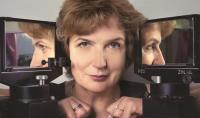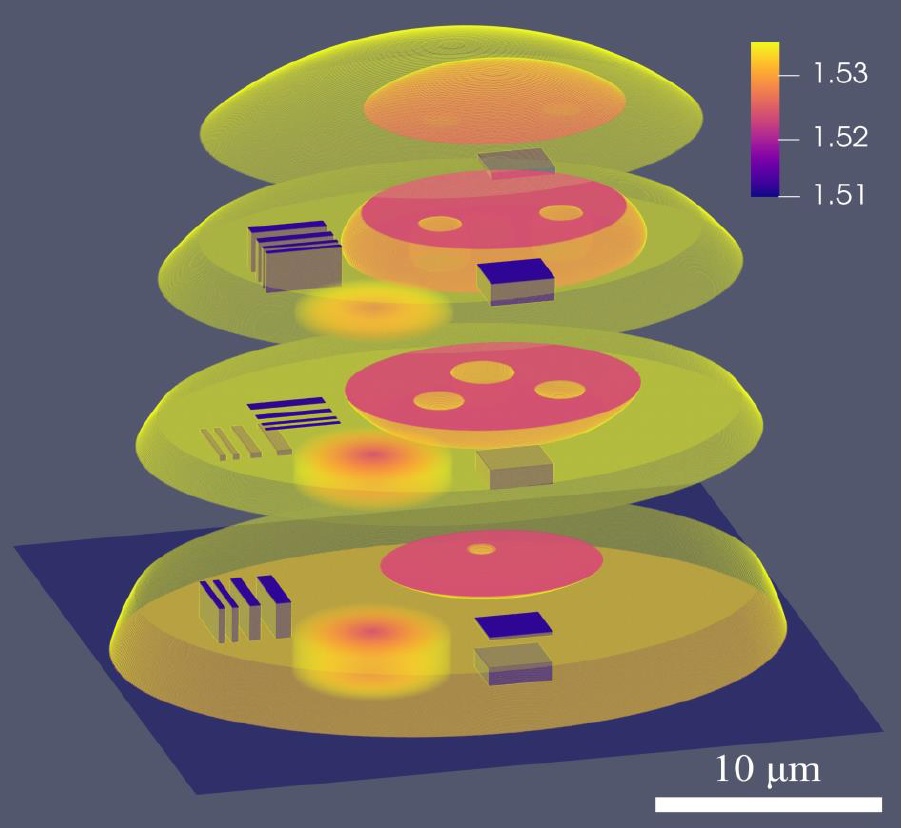Cell phantoms to help in the development of holographic tomography
Imaging cells is a daunting task due to their size and transparent interior. Holographic tomography proves helpful, as well as digital models and real phantoms of 3D cells developed by WUT researchers.
The team from the Faculty of Mechatronics under the supervision of Prof. Małgorzata Kujawińska for years have been working on improving holographic microscopes, which make it possible to learn and save complete information about the object, e.g. cancer cells. In order for the obtained data to be used in diagnostics, it is necessary to get to know the examined structures very well, measure their parameters in their entire volume.
Holographic tomograph made at the WUT
As part of the grant obtained in 2016 in the TEAM-TECH program, implemented by the Foundation for Polish Science, researchers from the Institute of Micromechanics and Photonics designed and built a prototype holographic tomograph for the study of slow-changing phenomena at the cellular level. In this new type of microscope, the cell or tissue section is scanned from many directions. Based on the collected data, it is possible to precisely reconstruct the three-dimensional geometry of the internal structures of the cell with an accuracy of less than 200 nanometers, but the distribution of the refractive index is also determined. This allows monitoring changes in biological cells, assessing their "health".
Importantly, the observed structures do not need to be stained (as in histopathology, which significantly prolongs the patient's waiting time for the test result) or marked (as in a fluorescent microscope).
– Currently, there are two holographic tomography systems offered by a Swiss and Korean company on the market, but ours gives a more accurate three-dimensional mapping and a fully quantitative analysis of the refractive index –emphasises Prof. Małgorzata Kujawińska.
The work of the WUT team is also a system that allows imaging changes occurring in cells and microorganisms in a dynamic way, e.g. under the influence of a given chemical or radiation. It will help in the development of new medicine and treatments.
Necessary common denominator
Unfortunately, CT imaging systems provide results with very different accuracy. It makes it difficult, and sometimes even impossible, to compare them and place them in common databases in case they are acquired by different research teams and diagnostic laboratories. The problem is the lack of standards and uniform calibration standards.
– Until now, the microscope has been a tool for qualitative analysis. Histopathologists primarily observed the image: they counted the cells, sometimes they tracked their movement. Current diagnostics, as expected by physicians who want accurate quantitative information, can be based on measurements of intracellular matter, its distribution and changes. However, the credibility and precision of mapping is crucial – explains Prof. Małgorzata Kujawińska.
Research is underway around the world to develop ways to verify the measured values. Unfortunately, it is not known what the real optical properties of the cell are, because other measurement tools are missing.
"Phantom" help
Cell models developed by the team of the Institute of Micromechanics and Photonics will help in the metrological control of the measurements results made during three-dimensional imaging of biological materials. Their parameters are precisely defined, and the characteristics reflect typical biological structures. The researchers created both digital and physical models of cell and cell cultures.
Nevertheless, a necessary condition for the wide use of holographic tomography, and more generally quantitative three-dimensional measurement methods in medicine, biology and pharmacology, is the development of a methodology for measuring and interpreting results, and consequently diagnostic standards. This will enable, for example, automating the analysis of histopathological samples, thus relieving doctors and speeding up the examination and reducing its cost.









